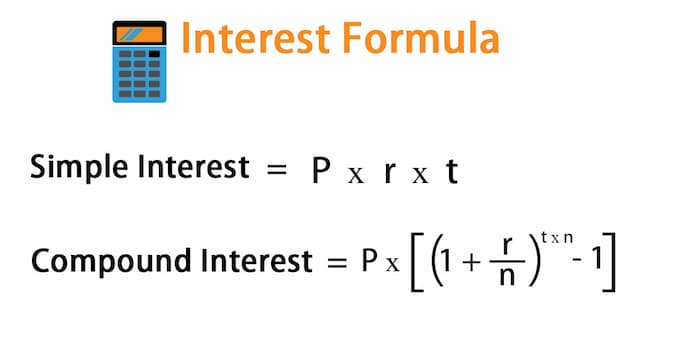If you’re eager to understand how interest calculations work, don’t miss this article by Save Google Wave. We are here to provide you with the knowledge and skills to confidently comprehend and utilize interest formulas like an expert. Let’s get started and delve into learning about the Interest Formula.
What is the Interest Formula?
The interest formula includes two types of interest – simple interest and compound interest. The fee paid to the lender for lending a loan is called the interest. This extra amount or the interest is what needs to be paid along with the actual loan. The interest formula talks about both types of formulas – Simple Interest Formula and Compound Interest Formula. The interest formula for both are

Simple Interest
Let’s start with the basics – simple interest. It’s the foundation of interest calculations. Simple interest is calculated as a percentage of the principal amount and remains constant over the loan or investment period. To calculate it, use this simple formula:
Simple Interest = Principal × Rate × Time
Compound Interest
Now, let’s level up to compound interest. Unlike simple interest, compound interest takes into account both the principal and accumulated interest. As time progresses, the interest compounds, leading to higher returns or debts. The formula for compound interest is:
Compound Interest = Principal × (1 + Rate)^Time – Principal
Simple Interest Vs Compound Interest
| Aspect | Simple Interest | Compound Interest |
| Meaning | Simple Interest is calculated on the original principal amount every time | Simple Interest is calculated on the original principal amount every time |
| Formula | S.I.= P×R×T | C.I.= P×(1+r)nt−P |
| It is equal for every year on a certain principal | It is different for every span of the time period as it is calculated on the amount and not principal |
Read more: Why Is College So Expensive?
Examples Using Interest Formula
What is the simple interest on the principal amount of $10,000 in 5 years, if the interest rate is 15% per annum?
Solution:
To find the simple interest using the given information:
- The principal amount, P = $10,000.
- The rate of interest, r = 15% = 0.15.
- Time, t = 5 years.
Using the Simple Interest formula,
- I = P × R × T
- I = 10000 × 0.15 × 5 = 7500
Therefore, the Simple Interest = $7,500
Learning about APR and EAR
The APR and EAR are both significant indicators of the cost of borrowing or the return on making an investment, respectively. It’s critical to understand both of them when evaluating financial products or making financial decisions.
Annual Percentage Rate (APR)
When tackling loans or credit, you’ll often encounter the Annual Percentage Rate (APR). It represents the entire value of borrowing, which includes interest and fees, expressed as an annual rate. To calculate APR, follow this formula:
APR = (Total Interest and Fees / Principal) × (365 / Time) × 100
Effective Annual Rate (EAR)
The Effective Annual Rate (EAR) is another essential concept to grasp. It reflects the true annual interest rate when compounding occurs multiple times within a year. The formula for EAR is:
EAR = (1 + (Nominal Rate / Number of Compounding Periods))^Number of Compounding Periods – 1
Are There Other Aspects to Consider?
Demystifying Amortization
Amortization comes into play when repaying loans through regular installments. Each payment consists of both interest and principal, with the interest gradually decreasing over time. To understand how much goes toward interest and principal in each installment, use an amortization schedule.
Distinguish APY from APR
APY (Annual Percentage Yield) and APR may sound similar, but they serve different purposes. While APR focuses on the cost of borrowing, APY reflects the effective annual return on investments with compound interest.
Considering the Time Value of Money
Time is money – literally! The Time Value of Money (TVM) concept acknowledges that money’s worth changes over time due to interest or inflation. TVM plays a crucial role in financial decision-making and investment evaluations.
You’ve now understood the secrets of interest formulas. Armed with this knowledge, you can confidently navigate loans, make investments, and make financial decisions. Bear in mind, understanding interest empowers you to make informed choices and secure your financial future.

